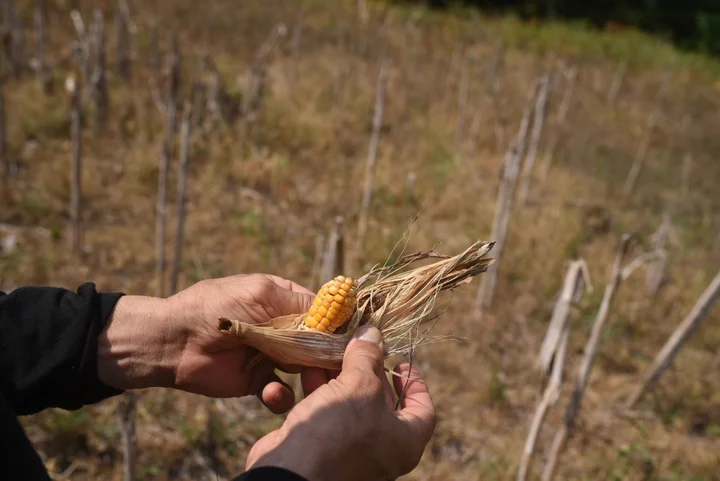
‘Dome of Doom’ Scorching Texas and Mexico Is About to Spread (1)
The heat that has set records across Texas and Mexico will be spreading across the central and southern
2023-06-28 21:22
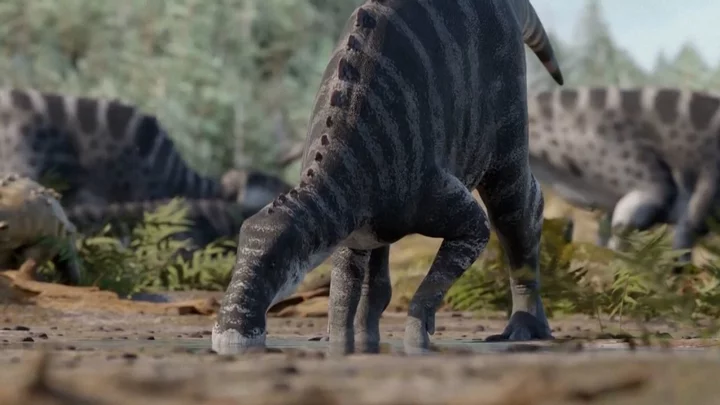
Scientists claim human ancestors lived alongside dinosaurs
It turns out that human ancestors and dinosaurs could have actually co-existed, according to new research. Scientists have produced a study which suggested that placental mammals were around before the asteroid that brought an end to the Cretaceous period hit Earth 66 million years ago. A new paper published in the journal Current Biology claims that fossil records of placental mammals suggests that our ancestors roamed the Earth before the extinction event, and later flourished due to the lack of competition from dinosaur species afterwards. According to the research, primates evolved shortly before the asteroid hit. Sign up to our free Indy100 weekly newsletter Lead author Emily Carlisle of Bristol’s School of Earth Sciences said: “We pulled together thousands of fossils of placental mammals and were able to see the patterns of origination and extinction of the different groups.” Carlisle added: “Based on this, we could estimate when placental mammals evolved.” “The model we used estimates origination ages based on when lineages first appear in the fossil record and the pattern of species diversity through time for the lineage,” co-author Daniele Silvestro from the University of Fribourg shared. While we don’t have a full picture of what human ancestors looked like at that time, it’s thought they “were small and squirrely”. Carlisle said: “Unfortunately we don’t know what our placental mammal ancestors would have looked like back then. “Many of the earliest fossils of placental mammals are quite small creatures such as Purgatorius – an early ancestor of primates – which was a small burrowing creature a bit like a tree shrew. So it’s likely that many of our ancestors were small and squirrely.” Have your say in our news democracy. Click the upvote icon at the top of the page to help raise this article through the indy100 rankings.
2023-06-28 19:47

What is Only Up? The game which is taking players hours or seconds to complete
The online gaming world has a new obsession, with a game called Only Up where you simply have to keep climbing up a series of random objects until you reach space. The game sounds relatively straightforward as anyone who has even the most basic concept of videogames knows how to climb up various structures. However, Only Up does not make the game easy for players as the seemingly infinite amount of objects range from pipes, bridges and trampolines but even the slightest of mistakes can end in disaster sending the players plummeting all the way back to the start of the game. Only Up was developed by SCKR Games and released in May 2023. It is available to play on Steam for the price of £8.50 ($10.80). Sign up to our free Indy100 weekly newsletter The game has gone viral thanks to high-profile streamers such as Adin Ross, Hasan Piker and iShowSpeed playing the game on their respective streams. iShowSpeed, who has 17 million followers on YouTube, attempts to play the game have proved to be particularly entertaining. At one point he lost 8 hours of progress. Thankfully, while playing the game on Tuesday the 18-year-old was able to complete the game in just under 5 hours. The most impressive run on the game so far has come from streamer Shade managed to find a glitch which allowed him to complete it in just 33 seconds. Whether you want to complete the game properly or use the glitch is your call but have fun regardless. Have your say in our news democracy. Click the upvote icon at the top of the page to help raise this article through the indy100 rankings.
2023-06-28 17:54

Eli Lilly’s Experimental Weight-Loss Shot Gives Company’s Strongest Results Yet
An experimental weight-loss shot from Eli Lilly & Co. yielded the strongest results of any of its treatments
2023-06-27 05:22

Former Apprentice star bares all in ‘world’s largest AI-generated billboard'
A man known for flying 4,000 miles to track down a thief who stole his AirPods is at it again – and this time, he’s baring all. With artificial intelligence technology on the rise, former Apprentice contestant, Lewis Ellis, is on a mission to find out if robots are going to come for our jobs. In a bizarre experiment, the 32-year-old, who is no stranger to unusual projects – having previously auctioned off his bum cheek for the highest bidder to choose a tattoo – he used ChatGPT to re-create an image for a billboard. And the result is hilarious. The giant billboard, featured at Victoria Warehouse in Lewis' hometown of Manchester, shows the entrepreneur stark naked – as a mermaid. Sign up to our free Indy100 weekly newsletter He used the famous Burt Reynolds Cosmo centre-fold for the main image and asked ChatGPT to “create the content”. ”Whatever it creates, that goes live,” Lewis says in a YouTube video. “I’m not sure if it’s is a good idea, I’m not sure if it’s going to be a complete waste of time but I guess we’ll find out.” Measuring in at 17.6m x 17.4 billboard, it is believed to be the second largest in Europe – however Lewis believes it is the “world’s largest AI-generated billboard. The Apprentice star photoshops his face and tattoos onto the nude Reynolds. The billboard went live at 9am on Wednesday (21 June) and… it’s definitely interesting. Lewis said: ”I was silly to assume that AI would pull it together for me – I won’t really have to do much. ”Turns out it's way harder than I thought. ”And it looks so bad.” The sorry-looking AI generated advert morphed the image of Lewis and Burt Reynolds into the sea creature. In the background, there is a cartoon drawing of a lighthouse and beach. The sign reads: “Feast your eyes on this tragic masterpiece. ”The world’s largest AI-generated billboard. ”AI is going to take over the world. ”That may be true… but it’s not going to be today.” The billboard ad is a recreation of his company, Hussel Marketing’s previous marketing campaign. Lewis took his inspiration for the experiment from the likes of McDonald's, Burger King and Subway, with the brands using ChatGPT for recent ads. To make it even harder, he gave himself just 24 hours to complete the challenge. The entrepreneur certainly isn’t shy in pushing the boundaries of what is possible and using technology to do so. In the past, he has shelled out £2,300 on flights, accommodation and food to fly 4,000 miles to track down his headphones, saying his mum describes him as “mental”. He told Jam Press: “We had no real plan but just hoped to find them again. “The fact you can track tiny headphones around the world is unbelievable. “I didn’t really expect to get them back and I joked that flying to Doha to get them is the pettiest thing I’ve ever done. “But it’s just great that we managed to find them – and now I don’t need to buy a new pair!” What does the marketing guru have up his sleeve next? It’s anyone’s guess. But one thing is certain – AI bots aren’t going to take over his job just yet. Have your say in our news democracy. Click the upvote icon at the top of the page to help raise this article through the indy100 rankings.
2023-06-26 23:18
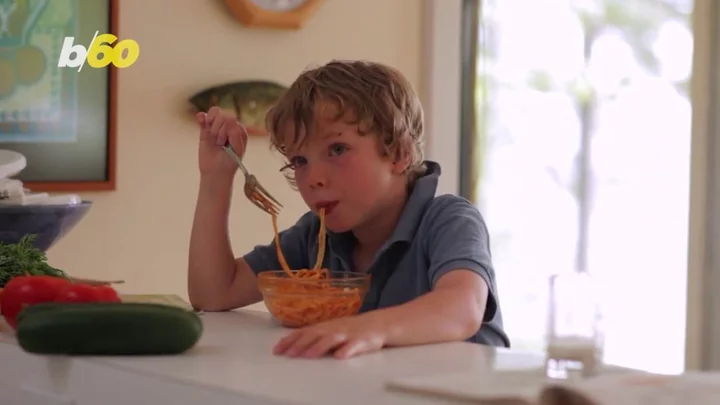
Why you should never drain your pasta in the sink
Pasta lovers are often guilty of draining their pasta water down the sink before adding sauce. But there is an important reason to save your pasta water and it is pretty scientific. Because pasta is made of flour, it releases starch into the cooking water as it boils, creating a white, cloudy liquid that emulsifies sauces it is added to. Emulsification is the process of blending two liquids that would otherwise repel each other ― in the case of pasta, it’s oil and water ― into a smooth, inseparable mixture. Sign up to our free Indy100 weekly newsletter Starchy pasta water is also a thickener, so saving some and mixing it into sauce creates something creamy and thick that won’t ever separate. This makes for a better sauce, so if you ladle some pasta water out before draining the rest you are going to be giving serious chef vibes. With that said, it is time to impress everyone you ever cook for again - just from the simple act of saving a small bit of water. Have your say in our news democracy. Click the upvote icon at the top of the page to help raise this article through the indy100 rankings.
2023-06-26 20:19

Scientists have come up with a new meaning of life – and it's pretty mind-blowing
The meaning of life is the ultimate mystery – why do we exist? And is there a point to… well… anything? These are questions to which we may never find answers, but at least we can define what “life” means in scientific terms. And yet, our understanding of what life is is changing all the time, thanks to space exploration. As scientists continue to hunt for life beyond our own world, biologists are having to rethink the meaning of the word “life” itself. Sign up for our free Indy100 weekly newsletter Generally, biologists explain “life” as connoting a self-sustaining chemical system which is capable of performing functions such as eating, metabolising, excreting, breathing, moving, growing, reproducing, and responding to external stimuli. This definition works pretty well here on Earth (although there are some important exceptions, such as viruses), but experts have pointed out that if life exists elsewhere in the universe, it may not display the same properties that we’re used to. Indeed, it might be unrecognisable as life as we know it (forget those little green men). In which case, how will we spot it if it ever crosses our path? Astrobiologist Sara Imari Walker and chemist Lee Cronin think they’ve come up with a solution. The pair are now arguing that highly complex molecules found in all living creatures can’t exist thanks purely to chance. Therefore, they say, the universe must have a way of creating and reproducing complex information and retaining a “memory” of all of this.. In an interview with New Scientist, Walker, of Arizona State University, explained their radical idea on how objects come into existence. The concept, known as Assembly Theory, explains why certain complex objects have become more abundant than others by considering their histories. If the theory proves correct, it will redefine what we mean by “living” things and show that we’ve been going about the search for extraterrestrial life all wrong. In the process, we could even end up creating alien life in a laboratory, she stressed. In her discussion with New Scientist, Walker pointed out: "An electron can be made anywhere in the universe and has no history. You are also a fundamental object, but with a lot of historical dependency. You might want to cite your age counting back to when you were born, but parts of you are billions of years older. "From this perspective, we should think of ourselves as lineages of propagating information that temporarily finds itself aggregated in an individual." Assembly theory predicts that molecules produced by biological processes must be more complex than those produced by non-biological processes, as Science Alert notes. To test this, Walker and her team analysed a range of organic and inorganic compounds from around the world and outer space, including E. coli bacteria, urine, meteorites and even home-brewed beer. They then smashed up the compounds into smaller pieces and used mass spectrometry to pinpoint their molecular building blocks. They calculated that the smallest number of steps required to reassemble each compound from these building blocks was 15. And whilst some compounds from living systems needed fewer than 15 assembly steps, no inorganic compounds made it above this threshold. "Our system … allows us to search the universe agnostically for evidence of what life does rather than attempting to define what life is," Walker, Cronin, and others wrote in a 2021 Nature Communications article. The handy thing about this building block system – which they’ve dubbed the “'molecular assembly index” – is that it doesn’t rely on carbon-based organic materials to be identified. In other words, an alien could be made of entirely different stuff entirely and we’d still be able to spot it as life using the index. It also works regardless of what stage of “life” an extraterrestrial being is in – whether it is still in its infancy or has moved into a technological stage beyond our understanding. That’s because all of these states produce complex molecules which couldn’t exist in the absence of a living system. If all of this is hurting your head, let’s just get back to the basics: if there is a secret to life, it might all be down to what we do, not what we are. Have your say in our news democracy. Click the upvote icon at the top of the page to help raise this article through the indy100 rankings.
2023-06-25 19:26
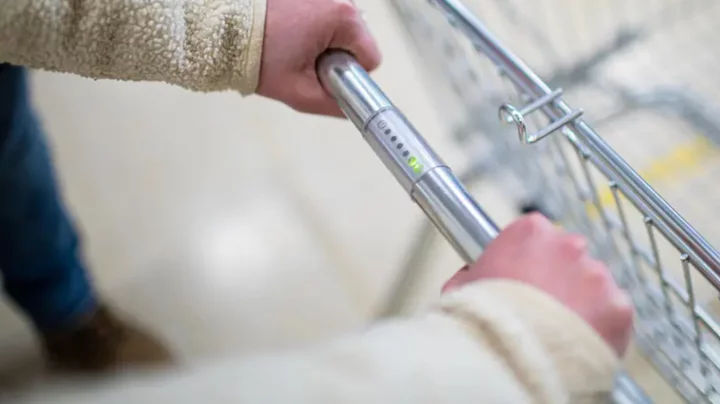
Heartbeat sensors on shopping trolleys 'could save lives', new study suggests
New findings have suggested that adding sensors to supermarket trolleys could save people’s lives. Scientists investigated whether installing electrocardiogram (ECG) sensors – designed to check the heart’s rhythm – on the handles of supermarket, trolleys could identify shoppers with atrial fibrillation, which causes an irregular and often abnormally fast heart rate. The sensors would detect heart conditions that put them at increased risk of stroke. The researchers said that over the course of two months, they identified 39 people who were unaware that they had the condition. Ian Jones, professor of cardiovascular nursing at Liverpool John Moores University, who led the study, said: “That’s 39 people at greater risk of stroke who received a cardiologist appointment.” He added: “This study shows the potential of taking health checks to the masses without disrupting daily routines.” It is estimated that around 1.5 million people in the UK have atrial fibrillation, contributing to one in five strokes. The condition is treatable, but at least another 270,000 people in the UK remain undiagnosed and unaware, according to the British Heart Foundation. Sign up for our free Indy100 weekly newsletter There are wearable devices that can also spot irregular heartbeat but this would also require people to take responsibility and wear the device. Professor Jones said: “Nearly two-thirds of the shoppers we approached were happy to use a trolley, and the vast majority of those who declined were in a rush rather than wary of being monitored. “This shows that the concept is acceptable to most people and worth testing in a larger study.” He added: “Checking for atrial fibrillation while people do their regular shopping holds promise for preventing strokes and saving lives. “A crucial aspect is providing immediate access to a health professional who can explain the findings and refer patients on for confirmatory tests and medication if needed.” The findings were presented at ACNAP 2023 conference organised by the European Society of Cardiology (ESC). Have your say in our news democracy. Click the upvote icon at the top of the page to help raise this article through the indy100 rankings.
2023-06-25 16:49
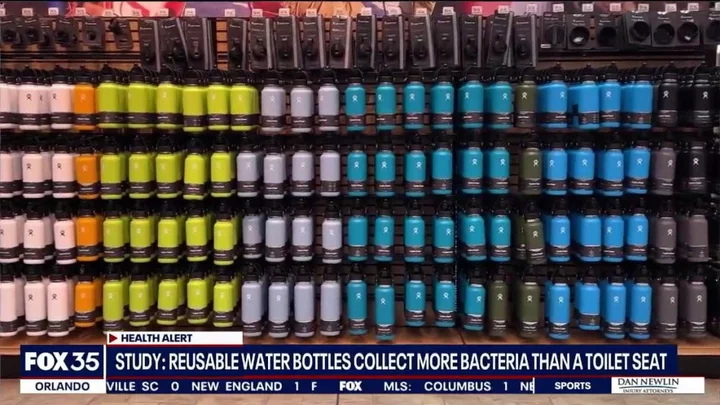
Reusable bottles contain 'more bacteria than toilet seats'
Reusable water bottles tick many boxes. Not only do they help you stay hydrated and help save money, but they also help cut down on single-use plastic. They've almost become a fashion accessory, with chic stainless steel flasks and viral bottles going viral across TikTok. Sign up for our free Indy100 weekly newsletter Trying to hit the NHS-recommended eight glasses of water a day for adults is an excellent idea, of course, but did you know there’s one way your refillable bottle could potentially be detrimental to your health? According to a study from waterfilterguru.com, reusable water bottles contain an average of 20.8m colony-forming units (CFUs) of bacteria, which equates to 40,000 times more than the microbes on a toilet seat. So what might be the consequences if you continuously sip and refill without washing your bottle properly between uses? We asked health experts to talk through the risks… Bottling up bacteria “A common misconception when it comes to reusable water bottle hygiene is that as you’re typically filling it with pure water and it’s only coming into contact with your own mouth, there’s little need to clean it often,” says Dr Donald Grant, senior clinician at The Independent Pharmacy. However, every time you drink from the bottle, you’re transferring bacteria from your mouth, which can then multiply in the container. “Anything that is reusable can be prone to accumulating dirt, dust or debris and, as a result, bacteria,” says private GP Dr Suhail Hussain. “This is exacerbated by the fact water bottles are the ideal environment for harbouring bacteria due to being moist.” Hard-to-reach crevices – for example, inside a screw top or under a flip-up straw – could also develop mould, and then there’s contamination from other sources. “When you store it in a gym bag, for instance, it can pick up bacteria from the interior of the bag or anything else stored in it, while you can also transfer bacteria from your hands to your bottle,” says Grant. “If your bottle has a valve cap, you may need to lift or twist it with your fingers, and this can transfer bacteria you may have picked up from touching other objects or surfaces.” What types of microbes are found in water bottles? “These might be simple commensals such as streptococcus and staphylococcus, which normally live in symbiosis with their host (i.e. us) but can become problematic if they accumulate or the individual is under the weather,” Hussain says. “Bacteria such as E. coli – a common cause of urine and bowel infections – can often colonise the water bottle following repeated handling, such as taking the cap on and off.” These bacteria can potentially cause a variety of issues. “You may become sick and develop gastric illness, such as diarrhoea or vomiting,” Hussain continues. “Gram negative rods – another common bacterium found in unwashed bottles – can lead to urogenital tract infections and pneumonia.” Grant warns: “If there’s a build-up of mould inside the bottle, this can cause allergy symptoms, such as a runny nose, sneezing, or red and itchy eyes. Symptoms might be more severe for someone with asthma.” How often should you wash your reusable water bottle? “To minimise your risk of getting sick, you should ideally clean your water bottle after each use,” Grant says. “As a minimum, you should aim to wash it thoroughly at least a few times a week.” Hot water and washing up liquid are all you need to banish bacteria on a daily. “Fill the bottle with hot soapy mixture and swill around, or leave to soak in a detergent mixture,” Hussain advises. “Remember to pay special attention to lids/caps and screw top regions – use a clean brush [to scrub them].” If you’ve neglected your bottle for a few days and it needs a deeper clean, Grant suggests: “Soak your bottle overnight in a solution of half vinegar and half water. Rinse the bottle and let it dry fully before using it again.” Storage is also important to help minimise nasty microbes. “Where possible, you should keep your water bottle out of germ-rich environments such as your gym locker or sports bag,” Grant says. “You should also avoid filling your bottle with anything other than water, such as protein shakes, energy drinks, or sugar-rich liquids, as sugar can stimulate the growth of bacteria.” Hussain adds: “Don’t leave a water bottle in the sun for long periods or sitting in the cup holder in the car – the mixture of warmth and moisture is likely to make bacterial overgrowth worse.” Have your say in our news democracy. Click the upvote icon at the top of the page to help raise this article through the indy100 rankings.
2023-06-24 17:16

Gas Is Here to Stay for Decades, Say Fossil Fuel Heavyweights
The biggest fossil fuel players are making the message clear: the transition to a green future will require
2023-06-24 09:28

Eli Lilly’s Experimental Weight-Loss Pill Show Rapid Results in Study
Eli Lilly & Co.’s experimental weight-loss pill helped patients shed pounds quickly in a mid-stage trial, setting the
2023-06-24 05:54

Sub Disaster Puts Spotlight on Another Extreme Venture: Space Tourism
Commercial space travel shares plenty of similarities with deep sea tourism: wealthy customers, tight spaces, far-flung destinations and
2023-06-24 00:52
